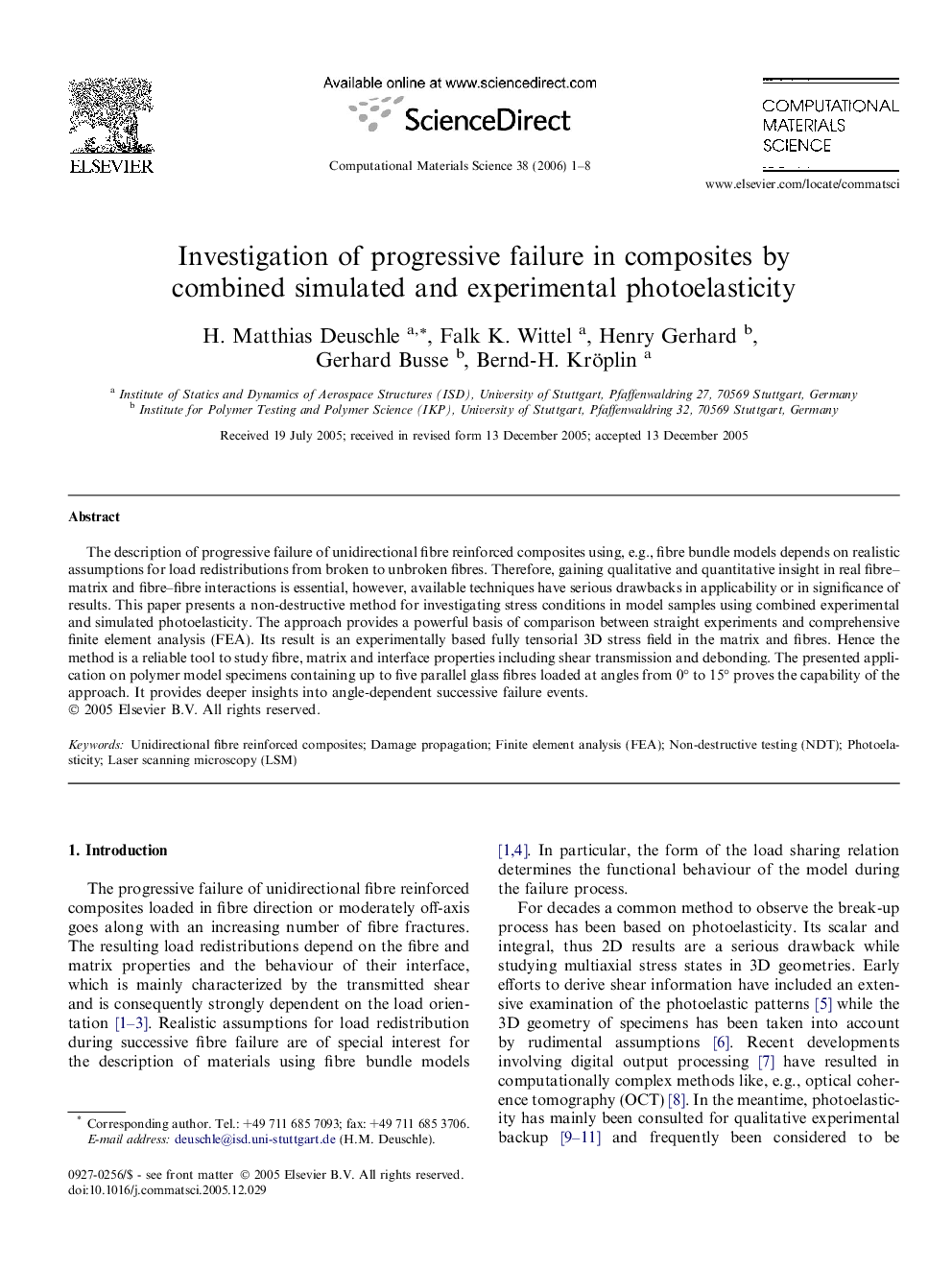| Article ID | Journal | Published Year | Pages | File Type |
|---|---|---|---|---|
| 1564454 | Computational Materials Science | 2006 | 8 Pages |
The description of progressive failure of unidirectional fibre reinforced composites using, e.g., fibre bundle models depends on realistic assumptions for load redistributions from broken to unbroken fibres. Therefore, gaining qualitative and quantitative insight in real fibre–matrix and fibre–fibre interactions is essential, however, available techniques have serious drawbacks in applicability or in significance of results. This paper presents a non-destructive method for investigating stress conditions in model samples using combined experimental and simulated photoelasticity. The approach provides a powerful basis of comparison between straight experiments and comprehensive finite element analysis (FEA). Its result is an experimentally based fully tensorial 3D stress field in the matrix and fibres. Hence the method is a reliable tool to study fibre, matrix and interface properties including shear transmission and debonding. The presented application on polymer model specimens containing up to five parallel glass fibres loaded at angles from 0° to 15° proves the capability of the approach. It provides deeper insights into angle-dependent successive failure events.
